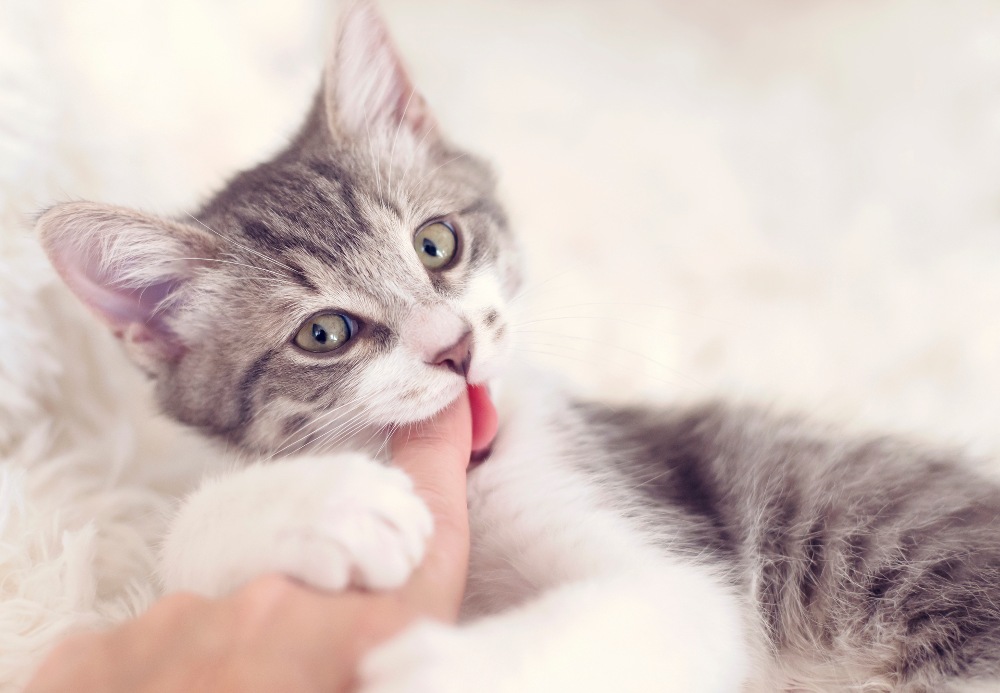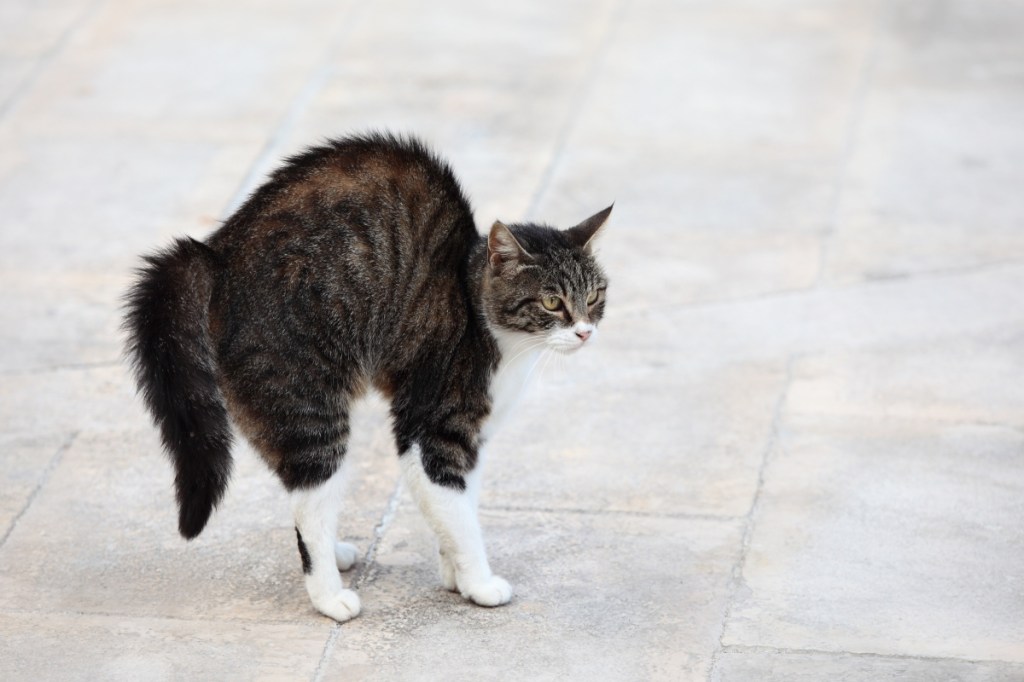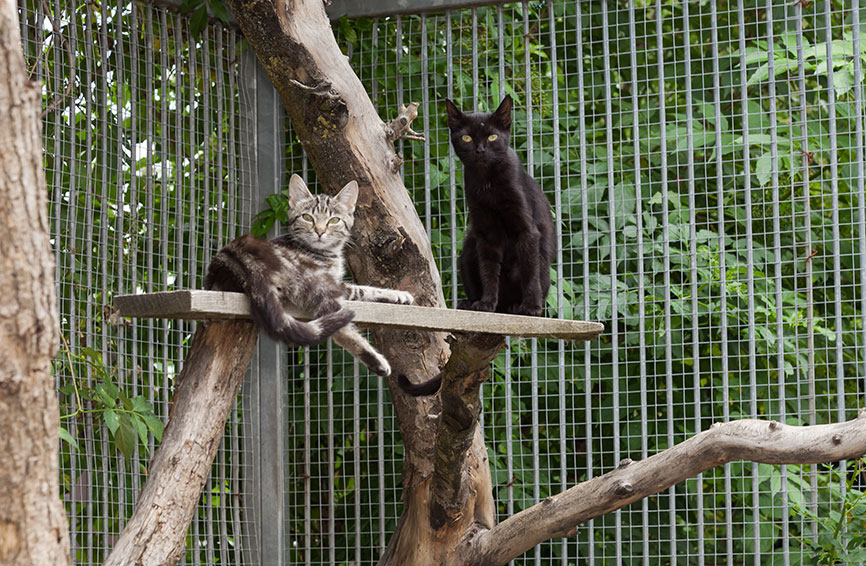Table of Contents
Kitty teeth are sharp and cat bites are no fun. To protect yourself from injury and nip the unwanted behavior in the bud, it’s important to understand the cause for your cat’s biting. Here are three different reasons your cat may be biting you, and how to prevent them.
1. Kitten play
Kittens enjoy playing from an early age, and it’s a normal behavior that gives them the opportunity to develop their coordination and problem-solving skills. Playing is also a social activity in which kittens can interact and develop appropriate behaviors with members of their own species. Engaging in rough play, which includes swatting, scratching, and biting, is all in good fun and normal for a kitten. However, it’s undesirable behavior when that aggressive play is directed towards you or another (human) family member.
How to stop play biting:
- Redirect play biting by providing a variety of toys and stimulation. Spending time regularly playing with your kitty and giving him new items to explore (such as those cardboard boxes from your online shopping) will help release his energy.
- Don’t encourage your cat to chase your hands or feet. Instead, use a dangly toy or throw your cat’s toys for him to chase.
- Consider adopting another cat as a playmate– just make sure the new kitty is equally as playful.
- If your cat likes to attack your feet, carry toys with you and throw them when you walk by your kitty to redirect his attention.
- Give your kitty a time-out for rough play by ceasing playtime and leaving the room.
2. Petting-induced aggression
Some pet parents call it “love biting,” but feline behaviorists have coined the term “petting-induced aggression” to describe a behavior that is not well understood. According to Vetstreet, some cats may have a status-induced aggression in which they seek to control a situation. While being petted at length, there may be a “neurologically significant negative stimulus” that affects certain cats. Through subtle body language, they try to communicate that they are unhappy with the situation, however these cues are often missed, which results in what appears to be a quick change in attitude.
How to stop “love” bites:
- Cats with aggression that seems to have come out of nowhere may be due to an injury or underlying medical issue. If this behavior is uncharacteristic of your cat, it’s a good idea to take him to the vet for an examination.
- If petting-induced aggression is typical for your cat, it’s important to pay attention to his body language so you know when to leave him alone. Some signs that your cat is reaching his tolerance level include: growling, tail thumping or lashing, shifting body position, ears flattened against his head, and looking back at your hand.
3. They want something
Cats may use biting as a form of communication when they want something. Instead of meowing, your cat might give a nip when he wants food, access to another room, or when the litter box is too full. This type of biting is distinguished by your cat’s behavior to try to lead you in the direction of what he wants, or meow immediately after the bite.
How to stop this type of biting:
- First, stop reinforcing unwanted behavior. If you respond and give your cat what he wants, this tells your cat that biting works to get your attention. When your cat nips because he wants something, ignore it.
- Switch to a different form of communication. If biting doesn’t work, your cat may try meowing or rubbing on your leg. Take advantage of the opportunity to show your cat that this new form of communication is appropriate and give him what he wants.
Another approach to stop cat biting
If your cat continues to bite, even after trying the tips offered above, you can “punish” him with a humane negative stimulus. A sudden clap of your hands or a quick squirt from a spray bottle as soon as he bites will startle your cat and tell him that biting results in an unpleasant experience. Another option is to release a short burst of air from an air canister. However, you will need to carry your canister or spray bottle with you at all times until you’re confident the behavior has stopped.








